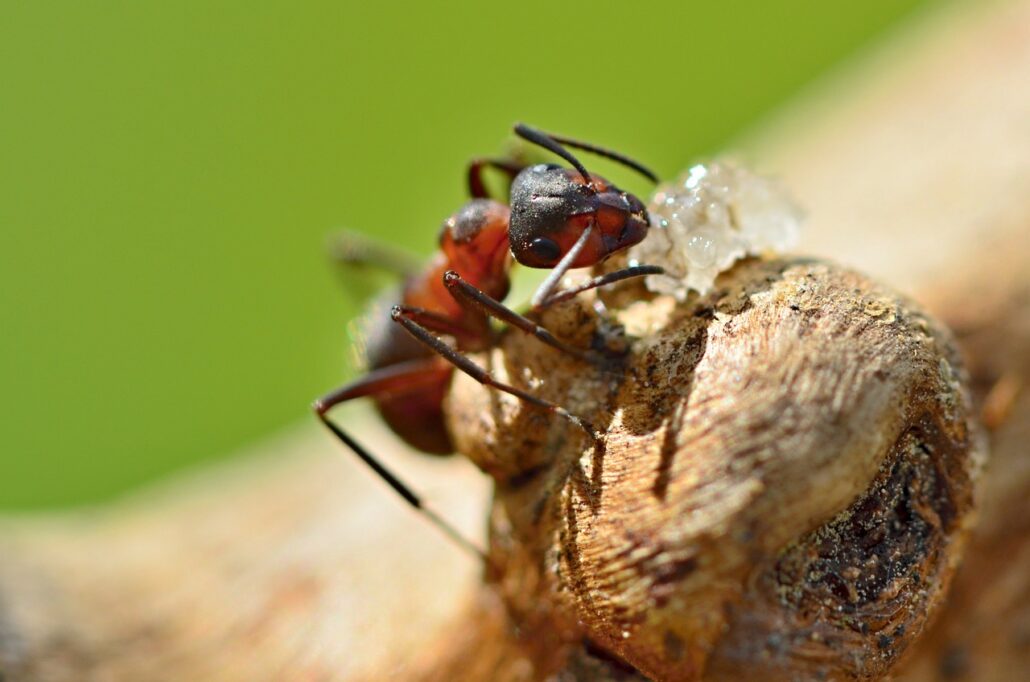Carpenter ants are a common nuisance in Massachusetts, where their presence can lead to significant structural damage if left unchecked. Understanding their characteristics, habits, and nesting behaviors is crucial for effective pest management.
Habits of Carpenter Ants:
Unlike termites that feed on wood, carpenter ants do not eat wood but excavate it to create galleries and tunnels for nesting. They are attracted to damp, decaying wood, making them a common sight in homes with moisture problems. Carpenter ants forage for food both indoors and outdoors, feeding on a variety of sources, including sweets, meats, and other insects.
Classes Within a Carpenter Ant Colony:
Carpenter ant colonies consist of different classes, each with specific roles and responsibilities:
1. Queen:
The queen is the largest ant in the colony and is responsible for laying eggs. She typically remains within the nest, producing offspring to sustain the colony.

2. Workers:
Workers are sterile females responsible for foraging, nest maintenance, and caring for the queen’s offspring. They are the most numerous members of the colony and are responsible for the visible signs of infestation, such as foraging trails and excavated wood debris.
3. Soldiers:
Soldiers are larger than workers and have enlarged mandibles, which they use for defense against predators and other ants. They play a crucial role in protecting the colony from threats.
4. Winged Reproductives (Alates):
Winged reproductives are potential future queens and males produced by the colony during certain times of the year. These individuals leave the nest in swarms to mate and establish new colonies.
Nesting Locations:
Carpenter ants prefer to nest in moist, decaying wood, but they can also establish colonies in dry, sound wood. Common nesting sites include:
Indoor Nesting Locations for Carpenter Ants
Within wall voids, attics, crawl spaces, and areas with water damage, such as around leaking pipes or roof leaks.
Outdoor Nesting Locations for Carpenter Ants
In tree stumps, logs, wooden fences, and rotting woodpiles.
In Massachusetts, where humidity levels can fluctuate, homes with wooden structures are particularly susceptible to carpenter ant infestations. Regular inspection and maintenance of potential nesting sites can help prevent colonies from establishing themselves and causing costly damage.
Conclusion
In conclusion, understanding carpenter ants’ characteristics, habits, and nesting behaviors is essential for effective pest control in Massachusetts and other regions where these ants are prevalent. By identifying and addressing conducive conditions and promptly addressing infestations, homeowners can protect their properties from the destructive impact of these wood-boring insects.

